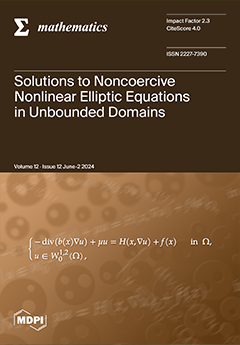In this paper, we consider and study in detail the generalized Fox–Wright function
introduced in our recent work as an extension of the Fox–Wright function
. This special function can be seen as an important case
[...] Read more.
In this paper, we consider and study in detail the generalized Fox–Wright function
introduced in our recent work as an extension of the Fox–Wright function
. This special function can be seen as an important case of the so-called
I-functions of Rathie and
-functions of Inayat-Hussain, that in turn extend the Fox
H-functions and appear to include some Feynman integrals in statistical physics, in polylogarithms, in Riemann Zeta-type functions and in other important mathematical functions. Depending on the parameters,
is an entire function or is analytic in an open disc with a final radius. We derive its basic properties, such as its order and type, and its images under the Laplace transform and under classical fractional-order integrals. Particular cases of
are specified, including the Mittag-Leffler and Le Roy-type functions and their multi-index analogues and many other special functions of Fractional Calculus. The corresponding results are illustrated. Finally, we emphasize the role of these new generalized hypergeometric functions as eigenfunctions of operators of new Fractional Calculus with specific
I-functions as singular kernels. This paper can be considered as a natural supplement to our previous surveys “Going Next after ‘A Guide to Special Functions in Fractional Calculus’: A Discussion Survey”, and “A Guide to Special Functions of Fractional Calculus”, published recently in this journal.
Full article





